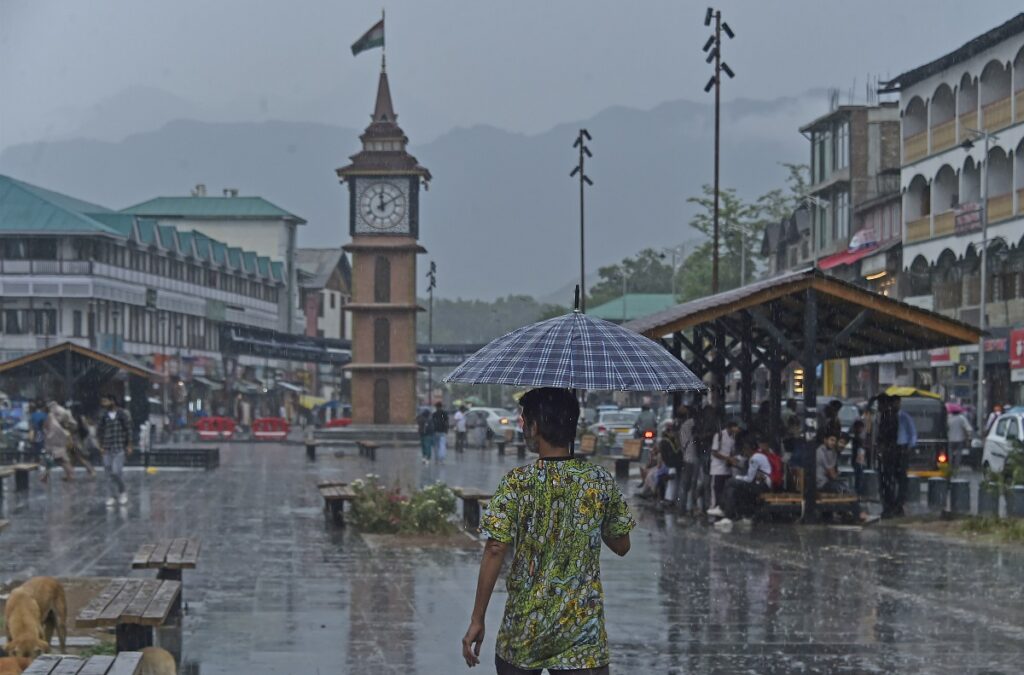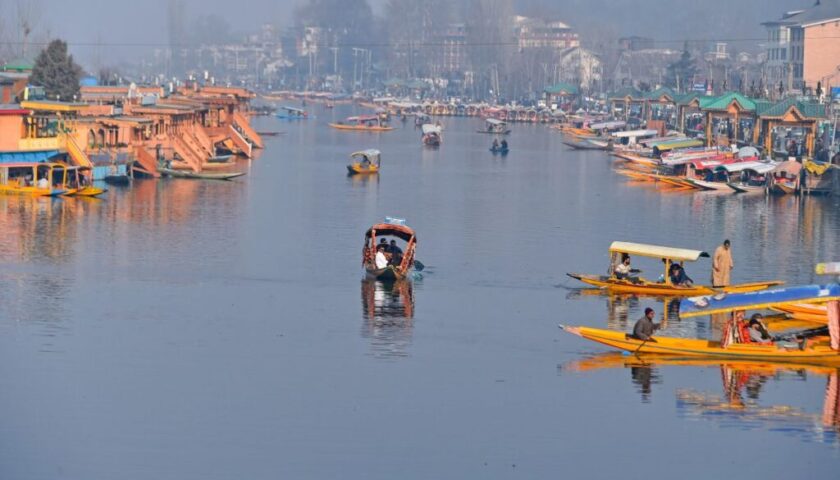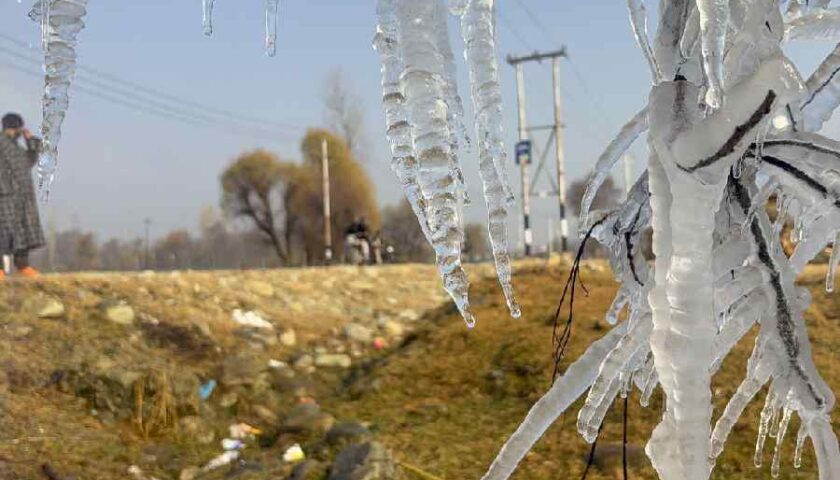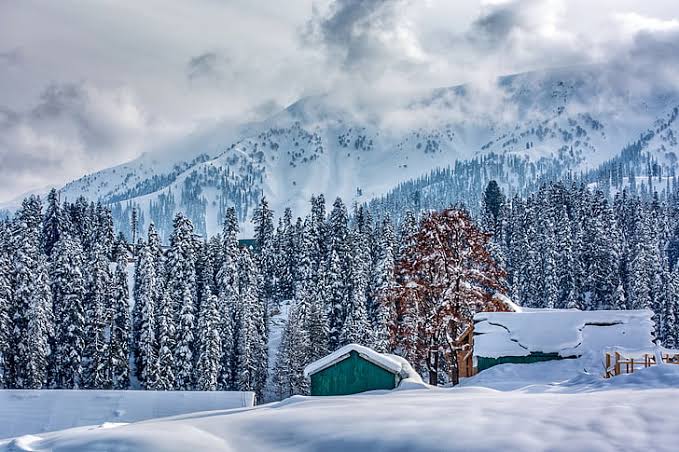Kashmir Awaits the Monsoon Miracle
By: Javid Amin | Srinagar | 04 July 2025
After weeks of grueling heat, parched landscapes, and mounting agricultural distress, there is finally hope on the horizon for Kashmir. The Meteorological Department has forecast the arrival of monsoon showers in the region beginning July 6, 2025, bringing much-needed relief to both residents and the region’s eco-sensitive horticulture belt.
The anticipated rain spells could serve as a lifeline for thousands of orchardists, farmers, and communities battling a relentless heatwave, declining water tables, and record-breaking temperatures. But along with relief, the rains may also pose risks—flash floods, landslides, and waterlogging in vulnerable areas.
This article dives deep into the latest forecast, the ecological and agricultural significance of this weather change, potential hazards, and the broader climate implications for the Kashmir Valley.
The Forecast Timeline – When and What to Expect?
The Indian Meteorological Department (IMD) has issued a detailed bulletin predicting a phased arrival of monsoon rains in Jammu and Kashmir:
- July 5: The region will remain hot and humid through the day, with increasing cloud cover toward the evening. There is a moderate probability of light rainfall or isolated thunderstorms late at night.
- July 6 to July 8: Widespread light to moderate rainfall is expected across the Kashmir Valley, with heavy showers predicted in some pockets of Jammu division. This phase marks the official beginning of the southwest monsoon’s influence over J&K.
- July 9 to July 10: Scattered light rain showers are likely to continue, gradually tapering off. Intermittent sunshine may return by July 11, but localized rain activity may persist over higher reaches.
Why the Rains Matter – The Context of Crisis
01: Kashmir’s Unforgiving Heatwave
Kashmir experienced one of its hottest Junes in nearly five decades, with Srinagar recording 34.0°C, nearly 4.4°C above the average. Towns like Kupwara, Qazigund, and Anantnag reported similar or higher temperatures, upending the Valley’s image as a summer sanctuary.
- Water sources dwindled: Streams, springs, and the Jhelum River saw dangerously low water levels.
- Health risks increased: Heat stress led to a surge in hospital admissions among children, the elderly, and outdoor workers.
- Urban discomfort: Srinagar’s heat island effect intensified discomfort, with nighttime temperatures offering little relief.
02: Apple Orchards Under Siege
The absence of rain during the crucial June-to-August growing phase has crippled apple orchards. Horticulturalists have reported:
- Premature fruit ripening, affecting size and coloration.
- Sunburns and smudging on apple surfaces, decreasing market value.
- Water scarcity in high-density plantations, even in areas with drip irrigation.
With a horticulture economy worth ₹8000 crore, the stakes couldn’t be higher. The coming monsoon may be the only chance to stabilize the situation.
Advisory for Public & Farmers – Relief with Caution
While the showers bring relief, the Meteorological Department has also issued a weather advisory, warning of possible side effects of heavy rainfall:
01: Flash Flood and Landslide Risk
- Vulnerable zones in Baramulla, Bandipora, Ganderbal, and Anantnag may witness sudden floods, especially in hilly terrains.
- Landslides and mudslides are likely in geologically unstable slopes, particularly in Pahalgam, Sonamarg, and Doda.
- Shooting stones may disrupt travel along highways like Srinagar-Jammu and Srinagar-Leh.
02: Urban Flooding and Health Issues
- Low-lying urban areas in Srinagar, Anantnag, and Pulwama may face waterlogging, disrupting traffic and damaging infrastructure.
- Stagnant water could lead to vector-borne diseases like dengue and waterborne infections.
The administration has urged citizens to:
- Avoid unnecessary travel during intense showers.
- Refrain from venturing near swollen streams and rivers.
- Stock drinking water and essential supplies in vulnerable villages.
Climate Change – A Pattern, Not an Exception
Kashmir’s changing weather patterns are no longer random anomalies. Experts believe that the current heatwave followed by intense localized rainfall is part of a larger climate shift.
01: Rising Temperature Trends
- Since 2000, Kashmir has seen a steady increase in average summer temperatures.
- The frequency of heatwaves has more than doubled.
02: Rainfall Deficits and Glacial Retreat
- Rainfall during October 2024 was 87% below normal, exacerbating winter drought.
- Glaciers feeding the Jhelum and Lidder rivers have shrunk significantly, affecting perennial flow.
This combination of heat and drought followed by sudden intense rains is increasingly common, posing new challenges for agriculture, infrastructure, and public health.
A Silver Lining for Agriculture and Livelihoods
Despite the risks, the monsoon spell could reboot Kashmir’s stalled agricultural cycle if managed well.
01: Hope for Apple and Paddy Farmers
- The rainfall could revive wilting apple orchards, enhancing fruit quality in mid and late-season varieties.
- Paddy transplantation, delayed due to water scarcity, may now be possible in Baramulla, Shopian, Budgam, and other rice belts.
02: Soil Rehydration and Pest Control
- Rainwater will help rehydrate topsoil, boosting microbial activity.
- It can also wash off harmful pests and fungi that thrive in dry, dusty environments.
However, excess moisture could also increase the risk of fungal diseases like apple scab and rice blast. Vigilant farm management and timely fungicide application will be critical.
What Needs to Happen Next – Policy, Preparedness, and Public Awareness
The upcoming rainfall period is a test—not just for nature, but for climate governance in Jammu and Kashmir.
01: Immediate Government Action
- Disaster response teams must be stationed in flood-prone districts.
- Health departments should issue hygiene advisories and stock emergency medicines.
- Irrigation and Flood Control Departments must monitor dams, bunds, and check dams for overflow risks.
02: Community Mobilization
- Panchayats and mohalla committees should activate local vigilance groups.
- Schools and colleges can host awareness drives on flood safety.
- Farmers must be trained on crop salvage techniques in case of extreme events.
03: Long-Term Resilience Plans
- Scale up weather-based crop insurance schemes to protect farm incomes.
- Invest in climate-resilient crops and early warning systems.
- Promote rainwater harvesting, especially in orchard zones.
Conclusion: A Rain of Relief or a Storm of Reckoning?
As Kashmir prepares to welcome its first monsoon showers of 2025, the mood is cautiously optimistic. For many, the rains symbolize respite from a season of suffering—from heat, hardship, and helplessness. For others, especially those living on climate’s frontline—farmers, orchardists, and mountain communities—this could mark the beginning of either recovery or deeper crisis, depending on how we prepare and respond.
Nature is speaking, not whispering. It’s time for us to listen, act, and adapt.




